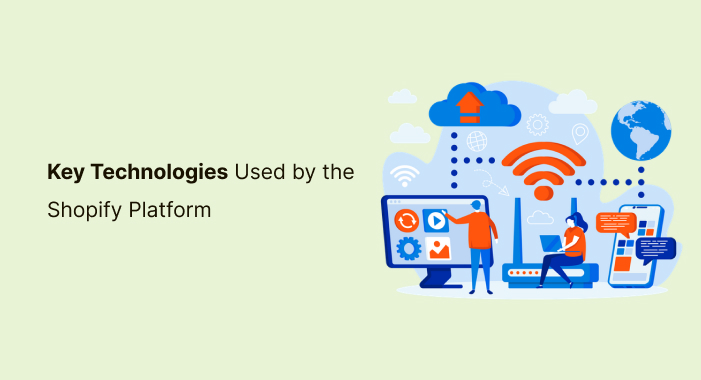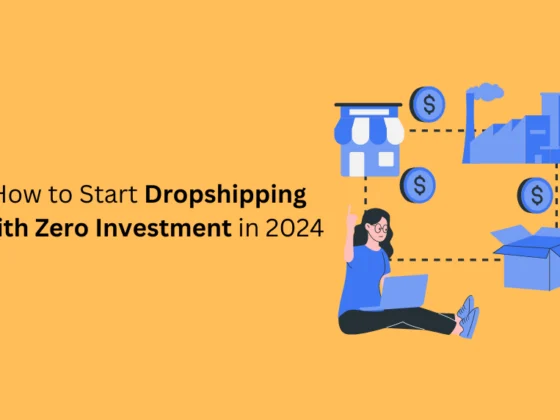Today we are going to talk about the key technologies used by the Shopify Platform, but first, we have to talk about the Silk Road.
The Silk Road was, and still is, a network of trade routes connecting the East and West. It was central to the economic, cultural, political, and religious interactions between these regions from the 2nd century BCE to the 18th century. The Silk Road primarily refers to the land but also sea routes connecting East Asia and Southeast Asia with South Asia, Persia, the Arabian Peninsula, East Africa, and Southern Europe.
In the talk, the CTO shared the viewpoint that the Silk Road is a great example of 2nd-century commerce, and he explained how Shopify can adapt that infrastructure to its operations.
Jean-Michel Lemieux said that Shopify is composed of different key technologies that, when combined, give you a solid foundation on which to build your business. These are the building blocks of their retail operating system.
Key Technologies Used by the Shopify Platform
1. An Open Internet
The Shopify CTO talked about how commerce needs to have roads that are accessible so that products and knowledge can continue to flow through the borders. In some parts of the world, and on some parts of the internet, these roads are in danger, as people, states, and companies are trying to put up walls and borders. But Shopify’s digital highway has been built on the promise of an open internet.
The internet was built on open standards like DNS, BGP, TCP/IP, and HTTP. The following are a few of Shopify’s open internet initiatives.
*Payments
When the internet was first built, commerce wasn’t considered to be a building block. The first browsers had a back button and a forward button, but no pay button.
Shopify joined the W3C’s Web Payment Working Group as a founding member in 2016. Its goal was to play an active role in standardizing payment actions across the web and testing their impact on checkout conversion. This new payment specification will allow customers to pay within any browser by using payment methods that are secured on their devices.
*3D models
Shopify is working with the Khronos Groups, a prominent open standards body, to advance and deploy 3D content for commerce on the web. Five of the six shops that have been highlighted by Apple as examples of stores using excellent 3D models are running on Shopify.
2. Security and privacy
For any open commerce network to succeed, merchants and partners need to first trust it. The integrity of a merchant’s relationship with their customers and their data needs to be protected throughout the entire commerce journey.
At Shopify, a merchant’s data belongs to the merchant. It’s their business advantage. Merchants hold explicit control over their data and who has access to it.
Tools to help merchants protect their interests:
*Identity
One of the biggest threats to a merchant’s data is unauthorized access to credentials. The average person receives 16 emails a month that have the malicious intent of stealing credentials. Often, a password is the only thing that lies between a bad user and your business’ bank accounts.
This month, Shopify launched a new identity vault. Merchants and partners will now have one account, one password, and one set of security settings that apply by default to all their shops and properties.
*Security hackers
Every day, Shopify processes around 10 billion events and safeguards over 10 PB of data. That’s why they have a network of nearly 3,000 security researchers participating in programs worldwide.
3. Extensibility
One of the successes of the Silk Road was the variety of goods that traveled along with it — a huge array of products were available to buyers along the road. In a similar way, every store on Shopify sells different products, with each merchant offering something unique.
Five years ago, the API that powered Shopify products wasn’t the same as the API that powered the apps in our ecosystem. We had an API for Shopify and a separate API for apps. Those days are over, as Shopify’s products are now powered by the exact same GraphQL API that you build your apps on.
4. Global Infrastructure
Global infrastructure was a key component of the Silk Road. Its scale empowered vast regions, enabling them to participate in trade, and was one of the main reasons the Silk Road thrived for 2,000 years. It’s also one of the reasons why we value our global infrastructure so highly.
If we were to pop open Shopify’s hood, you would see it has an infrastructure that’s been intentionally designed with both global scale and internationalization in mind. When a business opens on Shopify, it plugs into a global superhighway of cross-border selling.
Data from the World Bank shows that important growth in trade is happening globally, and Shopify is seeing the same global trend on the platform. Cross-border sales for Shopify merchants outside the primary English-speaking markets have grown 500 percent in the last three years.
This year, Shopify scaled from two to 180 points of presence (POPs) around the world, connecting shops to buyers. These are the blue dots in the above image. POPs have decreased latency for buyers and merchants by almost 50 percent for regions outside of North America.
As you can see, Shopify has several technologies that have enabled it to grow and be one of the top e-commerce platforms. It has become an inspiring example of a complex, well-structured, user-friendly platform. And it’s absolutely rocking.
In short, it’s a software-as-a-service (SaaS) platform that provides entrepreneurs with the opportunity to create a secure online shop with a broad range of functionality, as well as choose from about 100 payment gateways. For advanced users, there’s also an opportunity to edit the design templates.
If you would like to talk about your e-commerce product, we encourage you to set up a meeting with us and enjoy our Free Consulting.
If you enjoyed this post, I’d be very grateful if you’d help it spread by emailing it to a friend or sharing it on Twitter or Facebook. Thank you!
you might also enjoy these posts,








